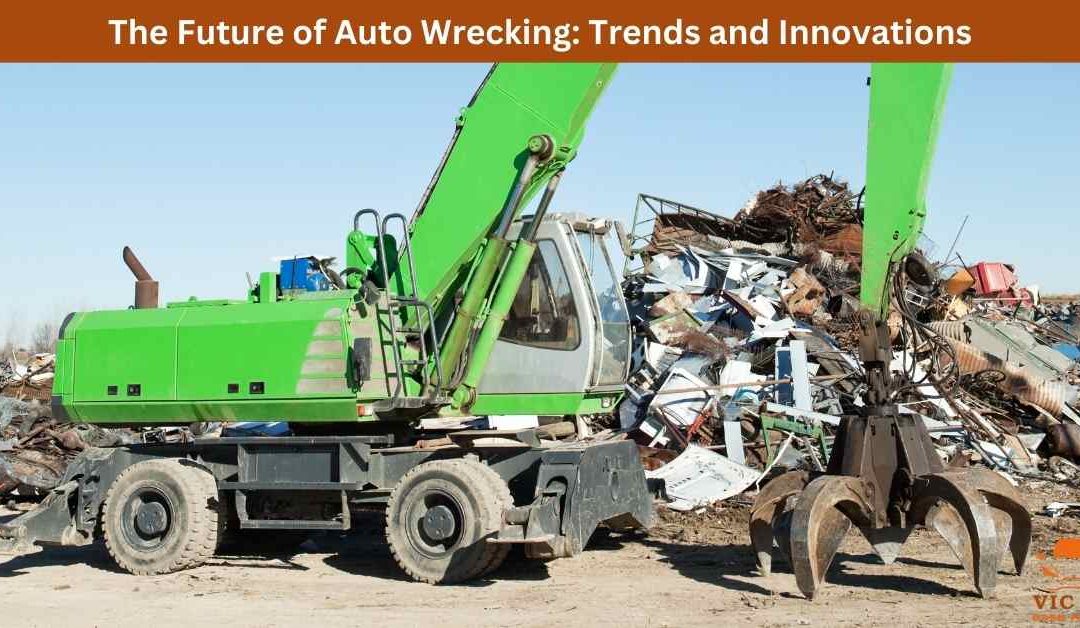The auto wrecking industry, often referred to as vehicle dismantling or salvage, plays a crucial role in the automotive ecosystem by recycling and repurposing parts from old, damaged, or unwanted vehicles. As the world shifts towards sustainability and technological advancement, the auto wrecking industry is evolving to meet new demands and challenges. This article explores the future of auto wrecking, highlighting the key trends and innovations that are shaping the industry.
The Rise of Sustainable Practices
As environmental awareness grows, sustainability has become a significant focus in auto wrecking. Here’s how the industry is responding:
1. Advanced Recycling Techniques
Modern auto wrecking yards are adopting advanced recycling techniques to maximize the reuse of materials. From metals to plastics, every component of a vehicle is being scrutinized for potential recycling. Innovations in sorting and processing technologies are enabling more efficient recovery of materials, reducing waste, and minimizing environmental impact.
2. Electric Vehicle (EV) Recycling
The increasing popularity of electric vehicles (EVs) presents new challenges and opportunities for the auto wrecking industry. Unlike traditional vehicles, EVs contain batteries and components that require specialized handling and recycling processes. As more EVs reach the end of their lifecycle, wrecking yards are investing in the necessary technology and expertise to safely dismantle and recycle these vehicles, ensuring that valuable materials like lithium and cobalt are recovered and reused.
Technological Advancements
The future of auto wrecking is also being shaped by technological innovations that improve efficiency and safety:
1. Automation and Robotics
Automation is transforming many industries, and auto wrecking is no exception. Robotics are being introduced into wrecking yards to assist with the dismantling of vehicles. These robots can quickly and safely remove parts, reducing the risk of injury to workers and increasing the speed and efficiency of the dismantling process. Automation also allows for more precise sorting of materials, leading to higher-quality recycled products.
2. Data-Driven Operations
Data analytics is becoming a valuable tool in auto wrecking. By leveraging data from vehicles, wrecking yards can make informed decisions about which parts to salvage and which materials to recycle. This data-driven approach helps optimize operations, reduce costs, and increase profitability. Additionally, data can be used to track the lifecycle of recycled materials, providing transparency and accountability in the recycling process.
Changing Consumer Behavior
Consumer attitudes towards sustainability and affordability are influencing the auto wrecking industry:
1. Demand for Affordable Parts
As the cost of new auto parts continues to rise, more consumers are turning to used parts as a cost-effective alternative. This shift in consumer behavior is driving demand for high-quality, reliable recycled parts. Auto wrecking yards are responding by improving their processes to ensure that salvaged parts meet the standards required by modern vehicles.
2. Growing Interest in DIY Repairs
The rise of the do-it-yourself (DIY) culture is also impacting the auto wrecking industry. More car owners are choosing to repair their vehicles themselves, creating a growing market for used parts. Wrecking yards are catering to this trend by offering a wide selection of parts and providing resources, such as online databases and tutorials, to help customers find the right components for their repairs.
The Role of Regulation and Policy
Government regulations and policies are playing an increasingly important role in shaping the future of auto wrecking:
1. Stricter Environmental Standards
As governments introduce stricter environmental regulations, auto wrecking yards must adapt to meet new standards. This includes proper disposal of hazardous materials, such as fluids and batteries, and ensuring that recycling processes are environmentally friendly. Compliance with these regulations not only helps protect the environment but also enhances the reputation of wrecking yards as responsible businesses.
2. Incentives for Recycling
To encourage recycling and reduce waste, some governments are offering incentives for auto wrecking yards that adopt sustainable practices. These incentives can include tax breaks, grants, or subsidies for investing in new technology. By taking advantage of these opportunities, wrecking yards can reduce their operational costs while contributing to a circular economy.
The Future Outlook
The auto wrecking industry is poised for significant growth and transformation in the coming years. As sustainability becomes a priority for both consumers and businesses, wrecking yards that embrace innovation and adapt to changing trends will thrive. The integration of technology, from robotics to data analytics, will further enhance the efficiency and effectiveness of auto wrecking operations.
Moreover, the shift towards electric vehicles and the growing demand for recycled materials will create new opportunities for wrecking yards to expand their services and contribute to a greener, more sustainable automotive industry.
Conclusion
The future of auto wrecking is bright, driven by trends in sustainability, technology, and consumer behavior. As the industry evolves, wrecking yards will play an increasingly important role in the circular economy, ensuring that vehicles are recycled and repurposed in the most efficient and environmentally friendly way possible. By staying ahead of these trends and embracing innovation, the auto wrecking industry is well-positioned to meet the challenges and opportunities of the future.
If you are in Cheltenham, Victoria 3192, and looking for cash for cars Melbourne service, this is the best way to visit us.
VIC Top Cash For Cars
2 Rochford Pl, Narre Warren South VIC 3805
(03) 7035 7828


Recent Comments